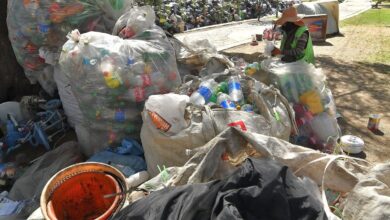Bolivia: the construction of the new presidential house that causes controversy
The critics consider that the building is very luxurious for a poor country with flaws of health and education, according to the curators of Bolivia

In the heart of the historic center of La Paz, Bolivia, an ostentatious building has been built since 2014 and will become the new government palace. The construction in which about 36 million dollars were invested is criticized by those who believe that the building damages the architectural patrimony of the capital, and that it is too luxurious for a country that should be concentrating its priorities on education and health issues.
The controversial presidential residence of 28 floors was erected in a space of 1,068 square meters and will be known under the name of 'La Casa Grande del Pueblo' (The Big House of the People, in English). However, during the years of the uprising, a large part of the "people" has opposed on numerous occasions, arguing that the structure bursts with the historical center of the city where it was forbidden to build high-rise works and that it does not contribute to the economic development of the city.
"The palace of a dictator"?
As far as local media and regulatory groups have been able to know, 'La Casa Grande del Pueblo' is equipped with modern security systems. It also has protection against disasters, gym, sauna, massage room, reading room and a heliport.
For the ruling party the construction is necessary and they object that they have always had to rent expensive spaces for the operation of some ministries of the country, and therefore the new structure will be a lasting investment for the city. However, the opposition community refutes that the building is "the palace of a dictator" who is not thinking or representing the situation of his people.
Of the approximately 36 million dollars that the investment would have cost, 7 million dollars would be destined only for the equipment of the structure. According to calculations of the Ministry of Education of Bolivia, building a small school in the country represents an economic investment of 2.3 million dollars on average. According to these figures, with the 36 million used in the lifting of the government palace could have been built about 16 schools across the nation.
Between priorities and a millionaire debt
Bolivia is one of the Andean countries with the most deficiencies in the fields of health and education. In addition to this, the opposition caucus in Congress indicates that since Evo Morales is running the country, Bolivia's external debt has managed to surpass 11,000 million dollars.
You can also read: IS THE EUROPEAN-STYLE INTEGRATION PROPOSED BY EVO MORALES POSSIBLE?
It is estimated that this debt is four times higher than the commitments made by previous governments, because through the Legislative Assembly the indigenous president has managed to approve 177 bills (including the building of the Government Palace) that allow the acquisition of the economic deficit.
However, the executive responds to the statement arguing that the external debt has activated the Bolivian economy. He also explains that before the Morales government the GDP was calculated at 9.574 million dollars and currently exceeds 37,000 million dollars.
According to information provided by government representatives, in 2005 Bolivia's external debt represented 52% of GDP, while in 2017 it represented 24.9% of GDP.
The inauguration of 'La Casa Grande del Pueblo' was scheduled for January of this year, but due to delays in the work was postponed until June 21. And although it has not been officially confirmed that there are scheduled marches for that day, it would not be surprising that the opening of the government house is framed with protests.
Latin American Post | Krishna Jaramillo
Translated from "Bolivia: la construcción de la nueva casa presidencial que causa polémica"





